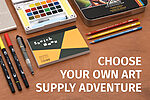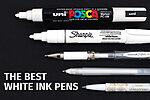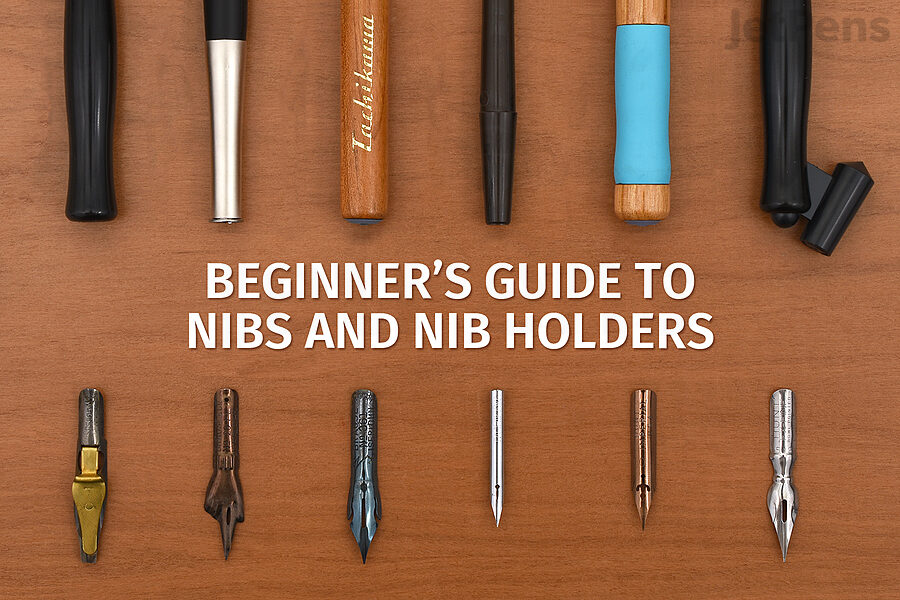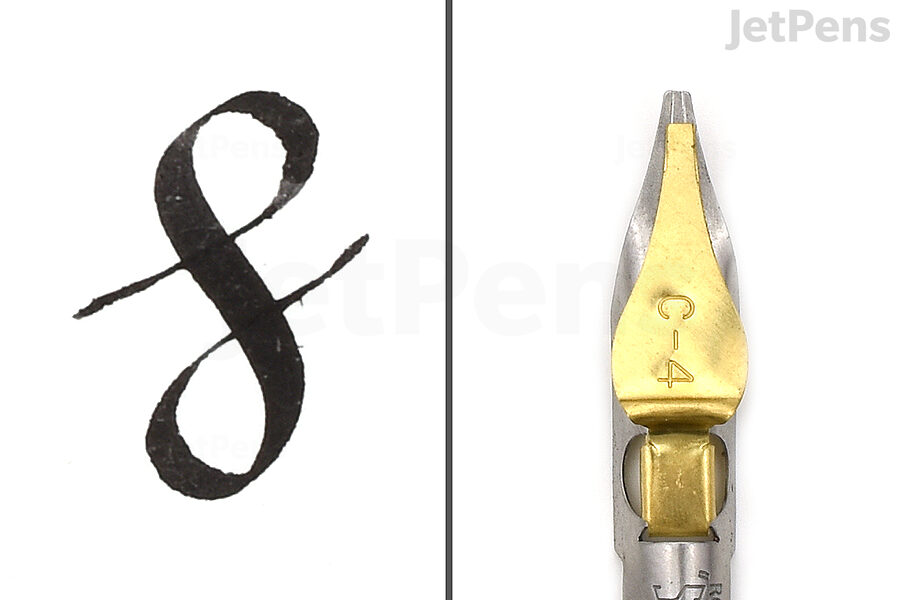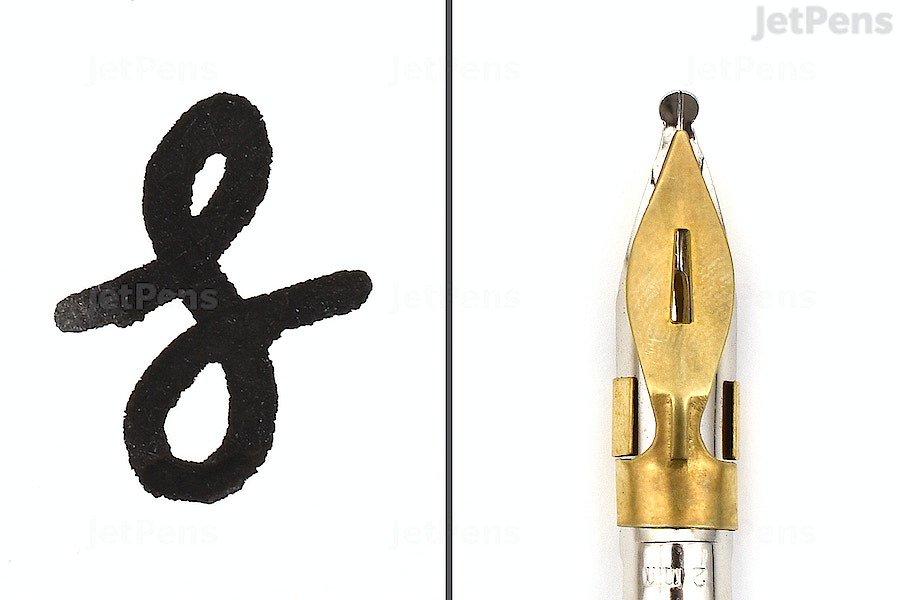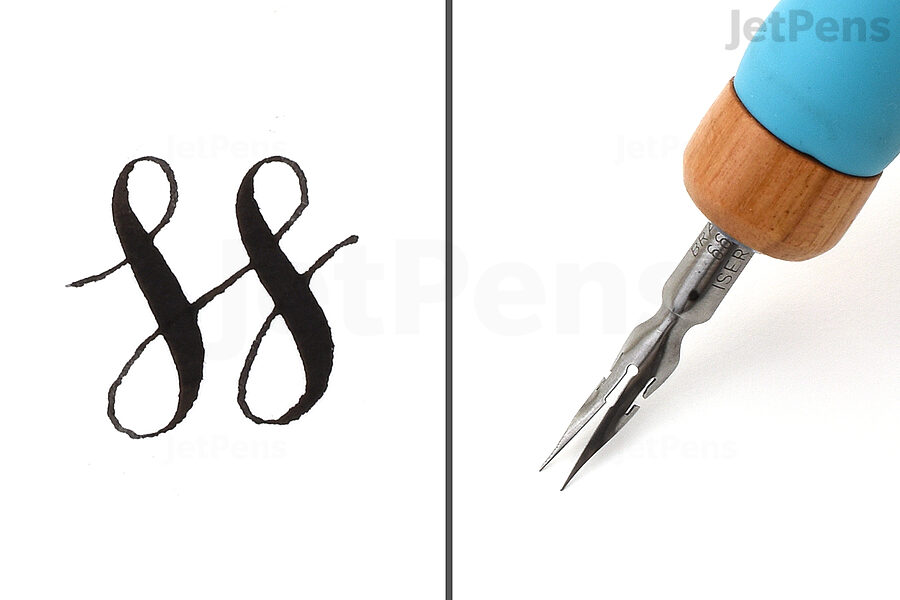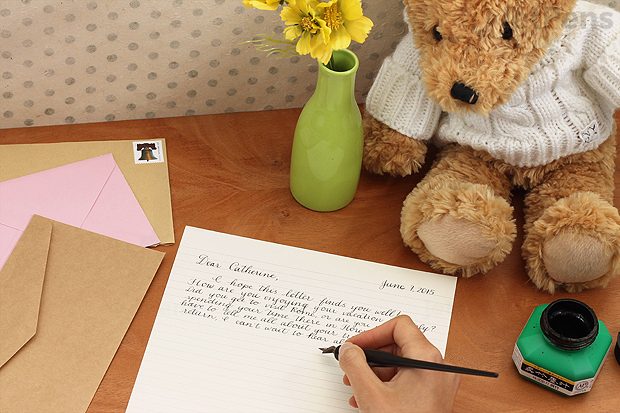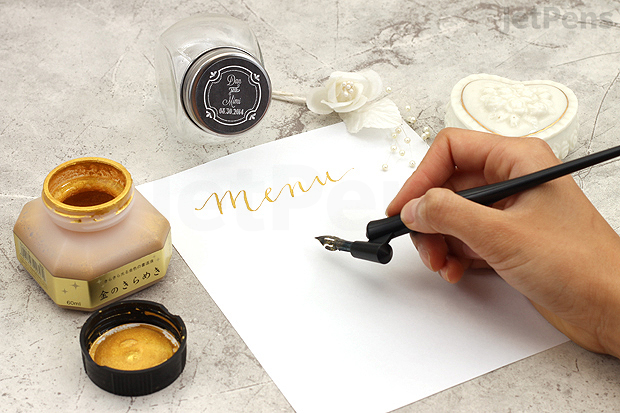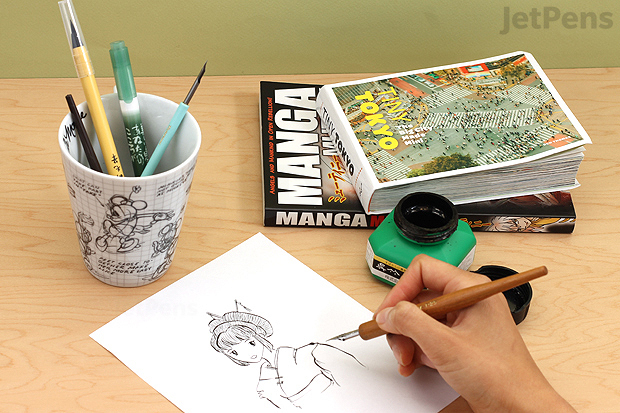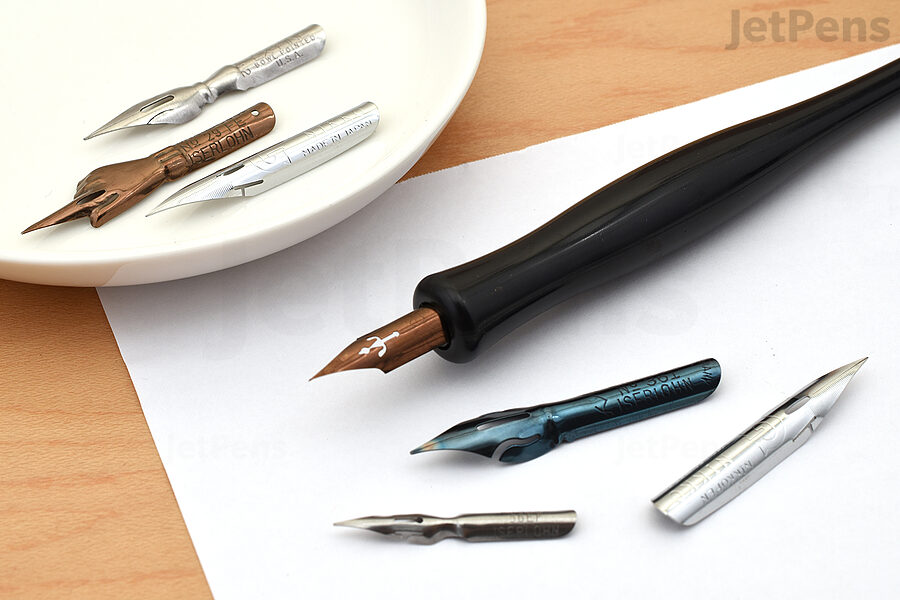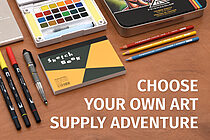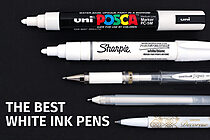One of the primary advantages of dip pens is that they do not have an internal filling system that can become clogged. They can be used with a variety of liquids, including thicker metallic and glitter inks, as well as homemade inks crafted from tea, berries, and more. Dip pens are also simple to clean, even when used with permanent inks like India inks: you can remove the nib from the nib holder and scrub it with a toothbrush and rubbing alcohol.
Additionally, dip pens are an inexpensive way to add unique flair to your writing. Flexible pointed pen nibs are far cheaper than fountain pens with flexible nibs and they can create more dramatic downstrokes prized in cursive calligraphy. And switching out nibs is almost instantaneous, so it’s easy to change from flexible nibs and Copperplate cursive to italic nibs and Blackletter gothic.
Of course, dip pens have disadvantages too. Without an internal filling system, dip pens have to be dipped into ink over and over again. Additionally, they tend to write very wetly and may need special paper to ensure that writing does not feather or bleed. The nibs can be finicky, requiring some preparation to remove machining oils and ensure proper function. Nibs will eventually wear out, too, so they need to be replaced. Pointed nibs especially tend to wear out faster, since you need to apply pressure in order to separate the tines.
It can also be difficult to start writing with a dip pen in the first place: you will have to teach yourself the correct hand position, and slowly learn how to control your writing pressure. And, as one last important consideration, they simply aren't as neat and easy to use as a self-contained writing instrument like a fountain pen. It can get quite messy when you use dip pens, even at your desk.
| Advantages |
Disadvantages |
- Variety of inks to choose from
- Variety of nibs to choose from
- Switch between nibs and inks with little effort
- Easy to clean
- Adds personality to writing
- Lower entry cost
- Vintage appeal
|
- Must be frequently dipped into ink
- Nibs have to be prepared and are often not usable straight out of the box
- Nibs eventually wear out, requiring replacement
- Learning curve
- Wet writing requires compatible paper
- Can get messy
- Not portable
|




